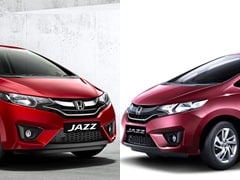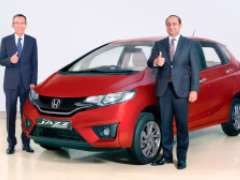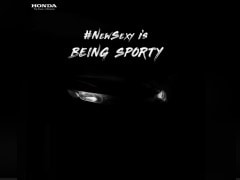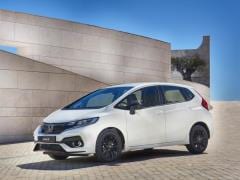2018 Honda Jazz Facelift Review

The 2018 Honda Jazz facelift has arrived, and unlike the usual MMC or minor model change (that takes place halfway through a car's generational lifespan), this one is just an update. Oh that is not me but Honda Car India saying that! So showing up to drive it, I had very limited expectations. Now the Honda Jazz was always a capable and well-appointed premium hatchback, though we have argued about how it could have been better in dynamic terms - and on some equipment. And well, it would have been great to have the Jazz come to us in the RS variant with a 1.5-litre heart. But that has sadly not transpired. So while the dynamics have not got that booster I'd have liked, the equipment certainly has. And to qualify as a facelift there is some tweaking on the exterior too.

(You can stare at it all you want but you won't be able to pick out any differences in the face)
Also Read: 2018 Honda Jazz Facelift Launched In India
So let's get that out of the way shall we? You can stare at it all you want but you won't be able to pick out any differences in the face. And that's because there aren't any! Nope, still no DRLs on this baby, even at the top spec - maybe the 'actual' MMC would bring those in, considering the Hyundai i20 and Maruti Suzuki Baleno have got 'em. Okay, so what has changed is a new taillight cluster - which now has a better congruity between it two split parts - the vertical element that travels up the edge of the rear windscreen, and the wider cluster on the fender. There is now a tubular LED element that travels through them. Honda is calling them LED 'wing lights' and it makes the car look more modern for sure. Though it is also rather Volvo-like! You also now get chrome door handles (yikes!) at the top end, along with rear parking sensors. And there are two new colours - Radiant Red and Lunar Silver.

(The Jazz gets a new taillight cluster, which now has an vertical element that travels up the edge of the rear windscreen)
Also Read: 2018 Honda Jazz vs Old Honda Jazz: Spot The Difference
On the inside is where the bigger changes are. The most significant is what Honda is calling its Digipad 2.0. This is the upgraded infotainment touchscreen with navigation. Now a 7-inch screen with Apple CarPlay/Android Auto, it also has the reverse camera display and voice commands. The steering also gets cruise control functions besides audio and phone controls. The push start button now illuminates in red like in the City - but is still missing on the petrol top-spec strangely. Honda says it has also worked on reducing the noise that seeps into the cabin - although any change here was not apparent. A front centre armrest, and driver-side vanity mirror round off the new features.

(On the inside is where the bigger changes are)
Also Read: 2018 Honda Jazz Facelift: All You Need To Know
The new cruise control I mentioned is only on offer on the CVT and diesel variants. It works well and the car remains easy to drive and manoeuvre. It has a light zippy feel, and its performance is rather smooth on the whole. Again I wish Honda would consider adding the more powerful 1.5-litre i-VTEC engine from the City to this lineup. It would give the Jazz a huge advantage and make it one of the seriously fun premium hatchbacks to drive. Oh well! As I drove away I realized Honda has also added speed-sensing door locks - good to have for sure.

(The most significant is what Honda is calling its Digipad 2.0)
And as always, the Jazz continues to lead on safety with pretty much all features as standard across all grades of the Jazz. Yes that includes not just the dual airbags and ABS but also the new features like rear parking sensors and speed-sensing door locks. I'd have liked to see Honda stiffen the ride a bit and give us tauter handling on the Jazz. And there are no other mechanical changes anyway, with the Jazz still offering its 1.2-litre, 89 bhp petrol and 1.5-litre 99 bhp diesel engine options.

(The Jazz still offers 1.2-litre, 89 bhp petrol and 1.5-litre 99 bhp diesel engine options)
On the whole the Honda Jazz remains a credible and convenient car, which offers a good alternative to the rest of the premium hatch crop. Prices for the petrol range start at Rs. 7.35 lakh and top off at Rs. 8.99 lakh, while the diesel range starts at Rs. 8.05 lakh and goes up to Rs. 9.29 lakh. The WR-V has certainly been a runaway success for Honda and the Jazz has perhaps felt a bit ignored! But its petrol CVT option remains a good choice too - considering the WR-V does not offer automatic. Honda could consider bringing its diesel CVT USP to these two models though to really shake things up against the i20 and Baleno.

(On the whole the Honda Jazz remains a credible and convenient car, which offers a good alternative to the rest of the premium hatch crop)
Photo credit: Pawan Dagia
Trending News
 10 mins readTata Sierra Review: India’s New Favourite?
10 mins readTata Sierra Review: India’s New Favourite?
Latest News
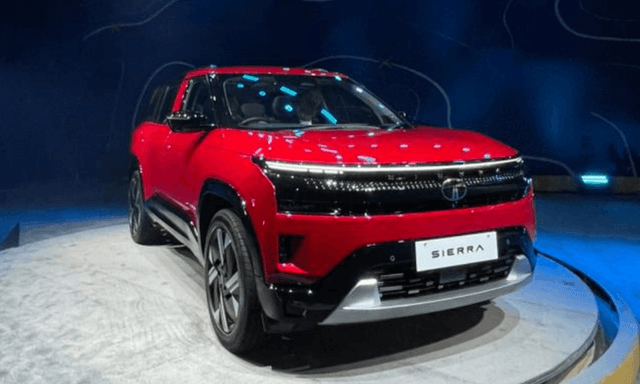 car&bike Team | Dec 14, 2025Top-Spec Tata Sierra Accomplished, Accomplished+ Prices RevealedRegardless of the powertrain combination chosen, all Tata Sierra Accomplished+ trims cost upwards of Rs 20 lakh (ex-showroom).2 mins read
car&bike Team | Dec 14, 2025Top-Spec Tata Sierra Accomplished, Accomplished+ Prices RevealedRegardless of the powertrain combination chosen, all Tata Sierra Accomplished+ trims cost upwards of Rs 20 lakh (ex-showroom).2 mins read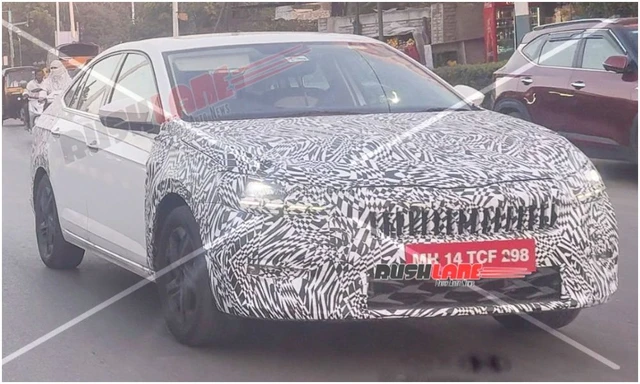 car&bike Team | Dec 13, 2025Skoda Slavia Facelift Spied Testing Again Ahead Of DebutThe facelifted Slavia is expected to debut in 2026 as Skoda-VW India looks to refresh its India 2.0 range.1 min read
car&bike Team | Dec 13, 2025Skoda Slavia Facelift Spied Testing Again Ahead Of DebutThe facelifted Slavia is expected to debut in 2026 as Skoda-VW India looks to refresh its India 2.0 range.1 min read car&bike Team | Dec 13, 20252026 MG Hector Facelift Interior Previewed Ahead Of DebutLatest teaser video of the upcoming Hector facelift suggests minimal cosmetic changes to the interior as well as reveals a new alloy-wheel design.1 min read
car&bike Team | Dec 13, 20252026 MG Hector Facelift Interior Previewed Ahead Of DebutLatest teaser video of the upcoming Hector facelift suggests minimal cosmetic changes to the interior as well as reveals a new alloy-wheel design.1 min read Jaiveer Mehra | Dec 13, 2025Passenger Vehicle, Two-Wheeler Sales Surge In November 2025: SIAMBoth segments reported a growth in the region of 20 per cent, though year-to-date sales growth in FY2026 was notably flatter at around 3 per cent.1 min read
Jaiveer Mehra | Dec 13, 2025Passenger Vehicle, Two-Wheeler Sales Surge In November 2025: SIAMBoth segments reported a growth in the region of 20 per cent, though year-to-date sales growth in FY2026 was notably flatter at around 3 per cent.1 min read car&bike Team | Dec 12, 2025Nissan Entry MPV Design To Be Unveiled On December 18New MPV to be the first of three new models for India by Nissan, alongside the Tekton and a three-row SUV.1 min read
car&bike Team | Dec 12, 2025Nissan Entry MPV Design To Be Unveiled On December 18New MPV to be the first of three new models for India by Nissan, alongside the Tekton and a three-row SUV.1 min read Jaiveer Mehra | Dec 12, 2025New Mini Convertible Launched At Rs 58.50 LakhDrop-top variant of the iconic Cooper hatchback available in a single Cooper S spec.1 min read
Jaiveer Mehra | Dec 12, 2025New Mini Convertible Launched At Rs 58.50 LakhDrop-top variant of the iconic Cooper hatchback available in a single Cooper S spec.1 min read
 Janak Sorap | Dec 11, 2025Harley-Davidson X440 T First Ride Review: Smarter and SharperHarley-Davidson has taken the X440 and given it a more focused and engaging twist. The result is the X440 T—essentially the same platform but updated in areas that give the motorcycle more appeal and riders more thrill.5 mins read
Janak Sorap | Dec 11, 2025Harley-Davidson X440 T First Ride Review: Smarter and SharperHarley-Davidson has taken the X440 and given it a more focused and engaging twist. The result is the X440 T—essentially the same platform but updated in areas that give the motorcycle more appeal and riders more thrill.5 mins read Shams Raza Naqvi | Dec 10, 20252025 Mini Cooper Convertible Review: More Colour On Indian RoadsThe updated Mini Cooper Convertible is set to be launched in the Indian market in the next few days. We drive it around Jaisalmer for a quick review.1 min read
Shams Raza Naqvi | Dec 10, 20252025 Mini Cooper Convertible Review: More Colour On Indian RoadsThe updated Mini Cooper Convertible is set to be launched in the Indian market in the next few days. We drive it around Jaisalmer for a quick review.1 min read Bilal Firfiray | Dec 8, 2025Tata Sierra Review: India’s New Favourite?Marking its return after a few decades, the reborn Sierra has made everyone sit up and take notice. But is it worth the hype?10 mins read
Bilal Firfiray | Dec 8, 2025Tata Sierra Review: India’s New Favourite?Marking its return after a few decades, the reborn Sierra has made everyone sit up and take notice. But is it worth the hype?10 mins read Girish Karkera | Dec 4, 20252026 Honda Prelude First Drive: Domesticated Civic Type RA sporty-looking coupe built to give customers a taste of performance but not at the expense of everyday practicality.5 mins read
Girish Karkera | Dec 4, 20252026 Honda Prelude First Drive: Domesticated Civic Type RA sporty-looking coupe built to give customers a taste of performance but not at the expense of everyday practicality.5 mins read Seshan Vijayraghvan | Nov 29, 2025Mahindra XEV 9S First Drive Review: Big Electric SUV, Bigger ExpectationsThe XEV 9S lands at a time when the EV crowd is growing fast. It’s a big, born-electric, three-row SUV that starts under 20 lakh. It sits close to the XUV700 in size, but the brief is very different. Here’s what it’s like on the road.11 mins read
Seshan Vijayraghvan | Nov 29, 2025Mahindra XEV 9S First Drive Review: Big Electric SUV, Bigger ExpectationsThe XEV 9S lands at a time when the EV crowd is growing fast. It’s a big, born-electric, three-row SUV that starts under 20 lakh. It sits close to the XUV700 in size, but the brief is very different. Here’s what it’s like on the road.11 mins read

